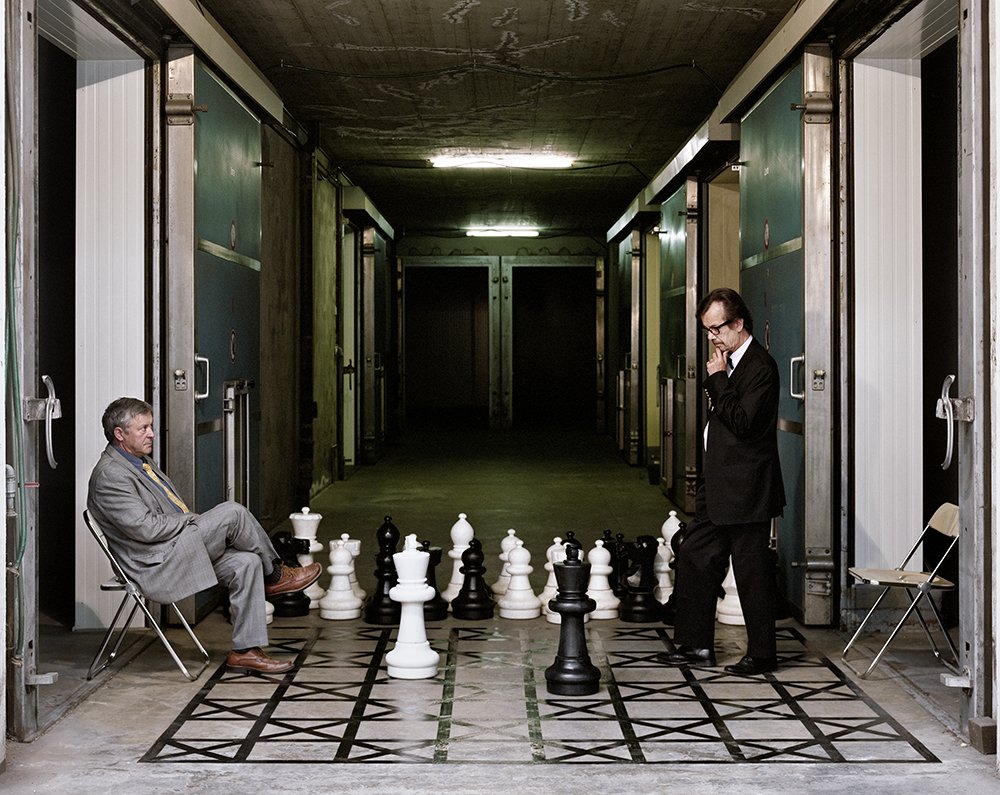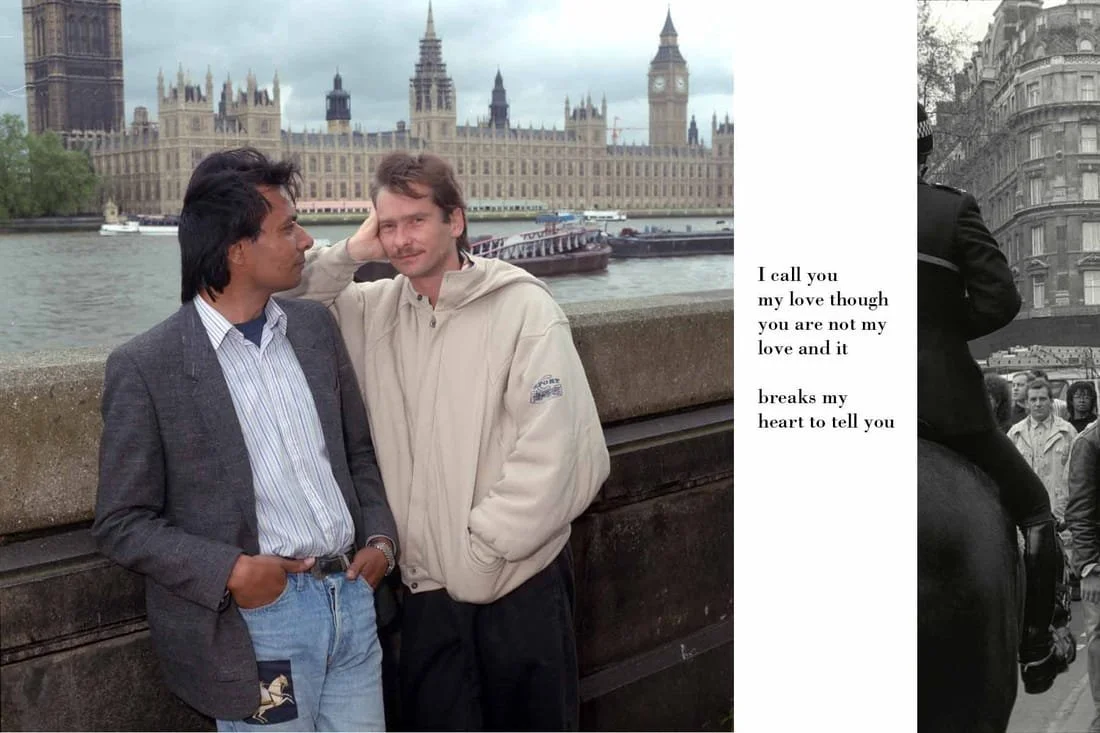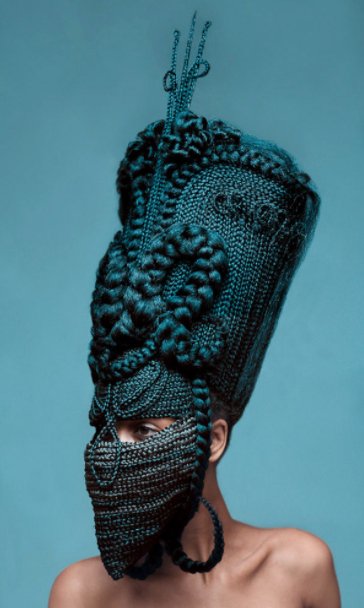Parallel Lines: Daniele Capra
© B. Massimo Spada, Pavistil (#2), 2021, installation view
Federica Belli The language of photography is still among the most contemporary, despite the spread of new digital art forms and augmented reality. What factors make photography such a relevant medium in our time?
Daniele Capra Any discussion on the contemporaneity or non-contemporaneity of a medium is definitely misleading. It's easy to forget about it, but let's consider what has happened with the field of painting during the last twenty years. When I started working professionally in art, painting was not considered a significant expressive medium. The wave of post-humanism was fading and other researches, based on poetics linked to multimedia and relational art, were becoming fashionable. Every painter had to justify his choice of expressive means to everyone – to curators in primis. Twenty years later, discussing the contemporaneity of painting has proven to be absurd. The same is true for photography. As an expressive medium, it exists and pre-exists any artist's research, and, like any expressive medium, it is poetically significant. Photography is as contemporary as any other medium available today. Only the results qualify the contemporaneity and the significance of a research. The rest is chatter.
F.B. I completely agree. It is all about the relevance of a means as a means, rather than as an end itself. Every means is useful if it facilitates its end.
D.C. Many photographers develop a continuity with their expressive tools, with the characteristics they possess and the results they guarantee. A photographer is able to use any photographic tool, but he will inevitably tend to recognise specific ones as his own extension, as an expressive prosthesis. Putting aside the fetishism (affective fetishism as well) towards certain objects, what counts is the success or failure of the work with respect to expectations. And sometimes it would be a useful exercise to try and pursue those same results with different means.
F.B. And regarding the distinction between photographer and artist, I must admit that more and more often I find myself discussing with artists who admit how, for their creative process, the specifics of the mechanical medium are much less relevant than they would be for a photographer who has to meet certain demands of a customer. In the field of art, the focus is mostly on intuition and empathic connections. It is a different fruition of the photographic medium.
Your experience as a curator builds on direct experience, following studies in music and economics. You define your role as an independent and militant curator, a quite stimulating definition. What does it mean to feel militant nowadays?
D.C. Militancy has two complementary meanings. The first concerns the expressive issues in terms of relationship with the artist: rather than dealing with the work of an artist as a critic would do, remaining detached, I tend to share the expressive instances of every artist. As soon as significant cues and ideas arise, they are shared to the fullest. It is a cultural and intellectual association in which every aspect can be discussed, in an atmosphere of empathy with the artist's research. If one doesn't become a supporter of the artist, the curatorial work is useless. It is necessary to live the whole experience side by side, a strategy which does not exclude individual responsibility over his own professional sphere. The second aspect also concerns issues of politics, or power, within the art system. Many colleagues practice, more or less voluntarily, a sort of distance and "superiority" with respect to the artist, dictated by their power in terms of inviting and managing relationships. Militancy rather consists of working in the same condition, without hierarchies, abuses, lack of respect, feeling the responsibilities of one's role, yet not making them weigh on the professionals one works with. And there is, in fact, a third issue, which is at the same time aesthetic, poetic and political: the awareness that the public is not only composed of members of the artistic community, but rather transversal. It is necessary to have an addressee, while many actors in the art system do not consider this, living in a completely self-referential world. Contemporary art is not for everyone, but it needs to be accessible to everyone. One cannot be contemporary and not interact with the world. There has to be the courage to talk about art with as many people as possible, from the museum director to the greengrocer down the street. It's too easy to refer to the few who are in the ivory tower only. One has to try and affect people's lives. Why make art if you can't move people's thoughts or perceptions? Militancy is also the humility of touching people with different habits and different interests, in an attempt to share a significance that still eludes us...
© I. Intermezzo, 2021, installation view, Trieste
F.B. Having curated hundreds of exhibitions in the most diverse areas of contemporary art, it is clear that your work is guided by your curiosity. And the work of independent curators, like that of photographers, is in continuous evolution: it is built little by little, according to one's own curiosity. Which references do you rely on in a wide plethora of artists, defining what deserves to be proposed to the wider audience?
D.C. I think it is necessary to evaluate each situation in a comparative manner. Honestly, it is not possible to understand the present when we don't yet have the interpretive tools that allow us to grasp and analyze what we see. Contemporary art is research, it requires the courage to create with the awareness that most of what we do will be lost, archived, forgotten and sometimes re-evaluated. Art has to do with the courageous attempt at trying to overcome all obstacles and reach beyond the shortcomings of the present. It is certainly not what the newspapers say it is: barely investments and costs. It's really a pity that there isn't enough space to communicate how there are not only big names, but also extremely relevant artists going one step further than our present. By only discussing auction prices, we consolidate the popular stereotype of the elitist nature of contemporary art.
F.B. Actually, finding the sources to turn to for this kind of information remains a purely personal research, with many virtuous exceptions – just to mention a couple, SkyArte and Artribune regularly inform about art events. Unfortunately, however, institutional channels still do not take responsibility for guaranteeing equality in terms of access to information on the real state of the art world. I have been impressed by how, opposite, Paris is covered with posters of cultural proposals and theatrical events. There is a long way to go in Italy.
Among the most interesting developments in photography, on the other hand, we cannot fail to mention its interactions with companies, a trend which makes it available for the general public. In your professional career you have developed various projects working on collaborations between artists and companies. With which aims and, above all, with what sort of outcomes?
D.C. An assumption is to have realised how modernity has conceptually separated the productive world from the humanities. Culture is therefore not a key factor in the creative processes of most companies. Yet there is enormous potential that many companies could reap in collaborating with artists. Many logics are in common between the two spheres: research, error and the attempt to correct it, not knowing which solution meets certain needs, the uncertainty between investing in one project or another. However, while companies respond solely to the market, art cannot do so, however hard it tries: fortunately, it is tied to other cultural logics, to the role of institutions and academic research. On the basis of these principles, the space for collaboration between artists and companies remains ample. Moreover, the most interesting opportunities for encounter are precisely the least obvious. Not so much the contribution of an artist in the optimal realisation of a corporate product, which remains superficial. Rather, it's the sharing of spaces and production processes, which can somehow lead to disturbing elements in the mechanisms of a company which always tend to be perfect, making the final result unpredictable. Having an artist in a company means, for example, being asked to do something that a machine cannot do. It can lead to a much more intuitive and rapid decision-making processes, to a more fluid and variable time management according to the project. On the other hand, the artist responds first and foremost to himself, while the company has to match many needs. Instinct and vitality can unbutton those standard business processes and alter them. And while many companies are now relying on contemporary art for their corporate storytelling, this type of space sharing is still very rare. Bringing an artist into the company means altering the comfort zone of workers, leading them to consider new approaches and resolve all-new conflicts. But this also helps the artists, who get to understand worlds quite different from their own. From an anthropological, economic and relational point of view, these are experiments that prove to be very fertile in the long run.
© D. Extra Ordinario, 2021, Vulcano Agency, ph. Nico Covre










